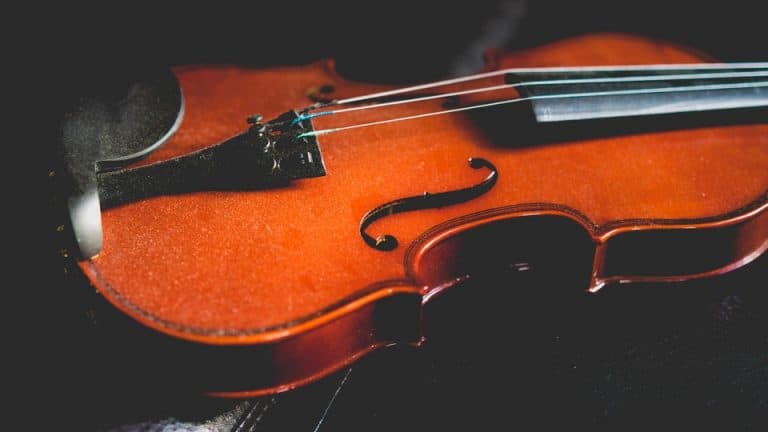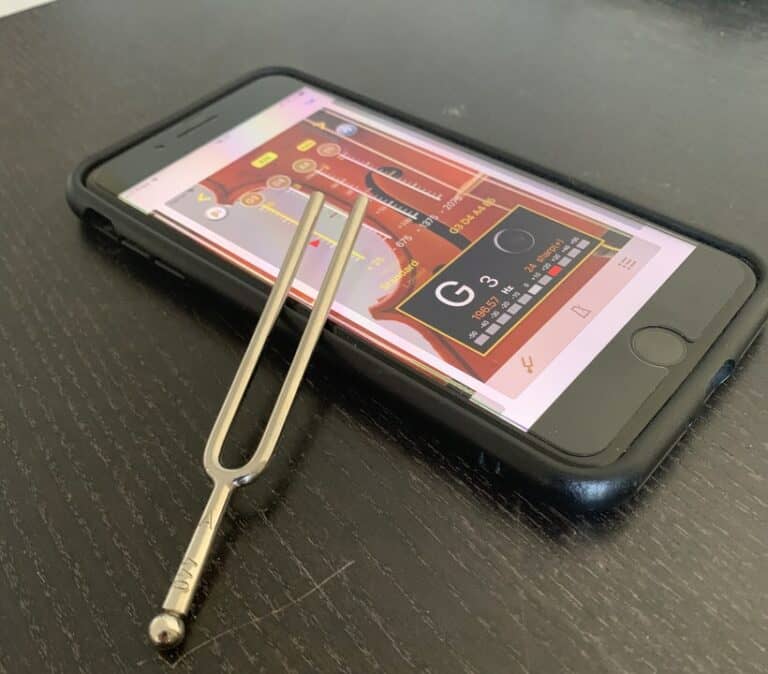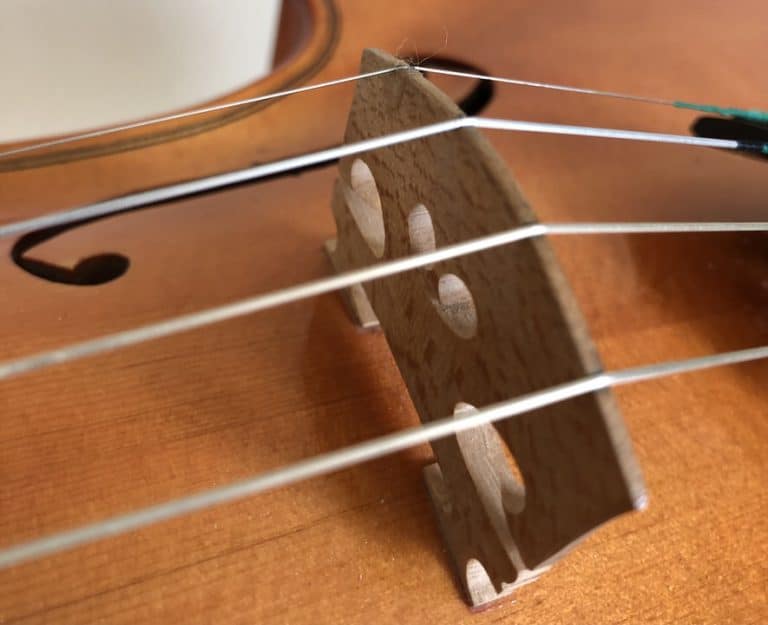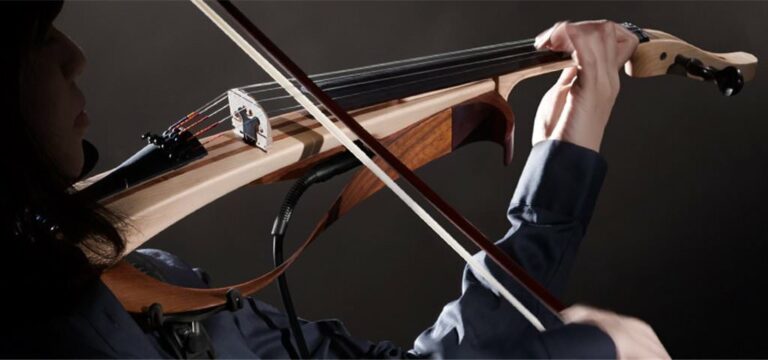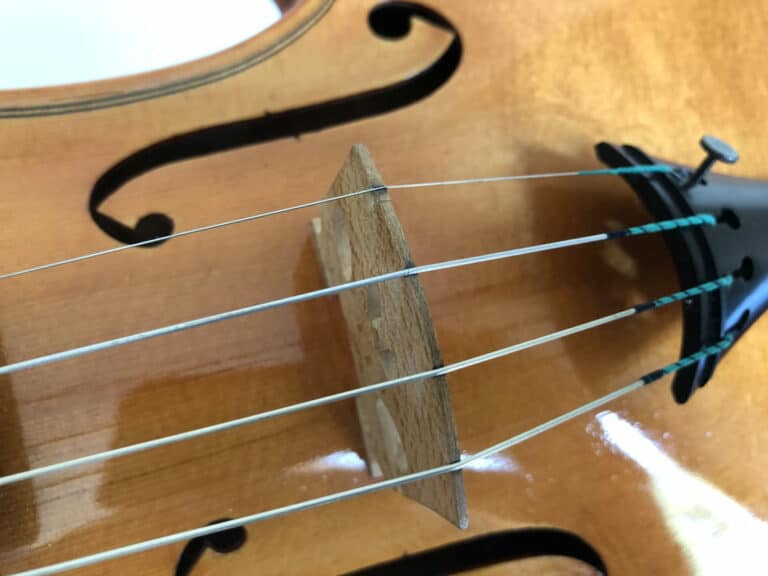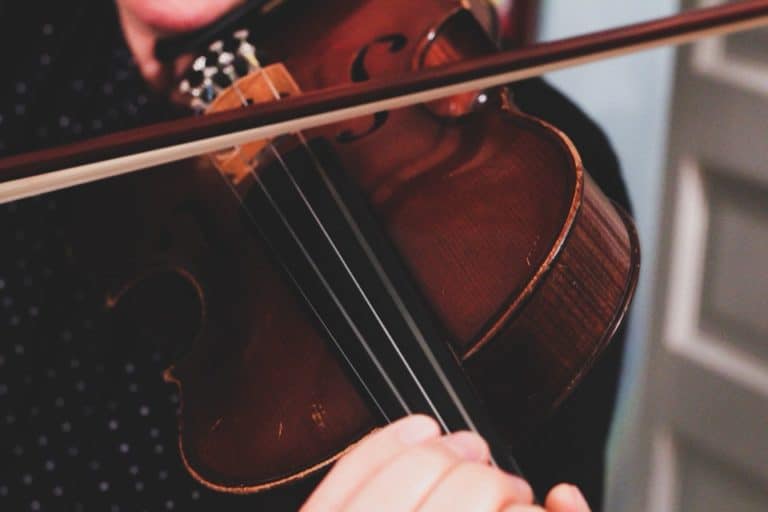Why is the violin so difficult? It can’t be learned!
Everybody has once heard a violinist or fiddler playing with a scratchy sound and slightly out of tune. We all know young children and their first challenging years on the violin… So the violin has a reputation for being a complex instrument. But is it a deserved reputation?
On many instruments, like the piano or the guitar, the player only has to press something to emit the sound. The finger hitting a key or a fret will produce a perfect pitch if the instrument is well-tuned beforehand. If the key or the string is pressed too hard, the sound might be too loud or inappropriate but will vibrate adequately and blend in with the music. That is not the case with the violin. A fret or a key gives an excellent in-tune sound, while on the violin board, micro-adjustments change pitch. A key starts a sound, while a whole gesture is necessary on the violin to create, hold, and finish the sound.
The violin has a small fingerboard with no frets, a unique way of producing the sound with the bow, and difficulty finding easy pieces to play with friends from the start, all of which make for a steep learning curve.
So tone production, intonation, and accompaniment are different for the violin. I have discussed each topic below. An analysis is essential to try and understand where the difficulty lies to overcome it.
I have listed here the 6 reasons why the violin is maybe the most difficult instrument.
The violin is difficult because of tone production: difficulty of the right-hand
On the violin, the gesture is the sound. The violinist has to create the sound entirely, from start to finish. And his gesture’s precision will determine the sound’s accuracy, duration, fading in, out, or both. That is difficult to achieve, though essential if you want to play, even for yourself, let alone a tiny band. If the pressure applied by the right arm is too intense, the sound will squeak. If the pressure is correct, but the motion is too slow, the sound will squeak also. I have covered in detail all the factors of a terrible squeaking or scratchy sound in that lengthy blog post: it is worth reading it to progress faster.
Now, let’s dive in and try to understand the mystery of violin tone production.
When a player hits the piano’s key or plucks the guitar string, the action and reaction are pretty simple to understand. The string vibrates in the frequency it is tuned in (or its harmonics) without any other interaction from the player.
When a bowed instrument (for example, the violin) generates a sound, the bow makes the sound all along (if the bow is removed, the natural sound of the violin string is tiny and dies quickly).
Violinists need a perfect balance between bow speed and pressure
When we look at the string vibrating, it appears to vibrate in a parabola shape, back and forth, like an elastic string, a guitar string. But that is not the case. As Hermann von Helmholtz discovered and described, around 1880, the string is moved by a bow in a V shape.
The Helmholtz motion described here, in a scientific way, has several musical repercussions. First, the bow alternates times when it sticks to the string, and the string is dragged with it (most of the time), and times when it slides and loses contact with the string.
That alternation between two frictions gives the sound of a violin.
Too little bow pressure: bad violin sound
When the violinist doesn’t play with enough pressure (or contact) on the string, the Helmholtz motion is double (two V corners), double the slipping time corresponding to less striking time. And, to the naked eye, the string doesn’t move in a parabola-like shape.
That kind of sound is called “surface sound,” or “on top of the string,” as my old teacher used to call it, as opposed to “into the string.” It is a kind of sound that is thin, light, airy, and not loud. Exceptionally, it can be used for a desired effect but is not acceptable in classical violin playing, even in piano and pianissimo passages. The reason is the lack of depth to the sound and the lack of edge and brightness due to the absence of natural harmonics. That kind of sound doesn’t project well in a room with an ensemble, let alone in a concert hall.
Too much bow pressure: bad violin sound
If, on the contrary, too much downforce is applied with the bow, then the violin squeaks, and the string doesn’t vibrate at all or in a chaotic pattern. That happens when a beginner doesn’t feel confident enough to strike the bow quickly enough.
Now add the point of contact as a third parameter to the first two (pressure and bow speed). If you play slowly (less speed), your point of contact needs to be closer to the bridge. If you play fast (with a lot of bow speed), your point of contact needs to be closer to the fingerboard. Then, due to the size of the stopped string, if you play low in the string, you have to place your bow close to the fingerboard, whereas if you play up in the high positions, you need to place your bow close to the bridge.
Now you quickly understand that a violin beginner has to overcome difficulties. Many other instruments don’t oppose new players. Making a sound, as essential as it can be, is already particularly difficult for the violin.
Many jazz, rock, and bluegrass violinist have a “surface” type of sound, which drove my Maestro Mentor crazy. He couldn’t get over it. When an electric violin is used, the tendency is to amplify a “surface sound” to make it loud instead of a “proper” sound. So electrification plays an essential role in helping overcome those kinds of difficulties. It is up to you to decide what you want to do with your technique considering where you want to go musically.
The difficulty of the left hand: it is hard to play in tune
The left hand. On the violin, there are no frets or keys. It is where you put your left finger that determines the note’s pitch. But the string has to be stopped precisely right because the fingerboard is small, and the note is likely to be played too high (finger 1 mm too close to the bridge) or too low (finger 1mm too close to the fingerboard). Many instruments offer an easier way to generate notes. But for those reasons, the violin is often played out of tune or at least with a bad intonation. The adjustments are so minor the note’s pitch even depends on how much you squeeze the flesh of the tip of your fingers on the fingerboard. Also, as the notes go up towards the treble part of the fingerboard, space shrinks proportionally. The more treble you play, the less room you have to fit the tip of your fingers. If you are like me and have a big hand, or like Izaac Perlman, you have to make a quick gesture to slide or remove the finger of the last note you’ve played to give room to the next. And this is not an easy task to play like that, cleanly and in tune.
The difficulty of hands synchronization for the violinist
Playing both hands at the same time. A beginner has to stop the string on the fingerboard at the exact right place, with good intonation and a beautiful vibrato: that’s a feat for a beginner. Well, okay, hand synchronization is a challenge for every instrument. But will the difficulties described above, problems in syncing can be multiplied, and the result catastrophic. Practicing slowly and patience usually is the answer to that issue.
Difficulty of playing chords and simple comping on the violin
Playing a couple of chords to accompany some friends or a singer is easy for a pianist or guitarist but requires a lot of practice for a violinist. Piano and guitar beginners often start with chords to accompany themselves or their friends. That is the usual start. But this is not the case when it comes to the violin. It takes two to three years to play chords properly on the violin. The board is so small, and you have to fit your fingers in tight places, often in an awkward position, quickly leading to intonation problems. But also, as you can’t play three to four notes simultaneously, you usually have to break up chords with different patterns: two and then two. So this is quite frustrating as chords and accompanying are an excellent way to start usually and quickly be part of a band. So there are a couple of tricks around it if you want to speed up your social playing and orchestra or band integration. For a start, you can transform a chord into :
- An arpeggio;
- A Brocken chord: each note played one after the other on each cord;
- A single line, yes, why not?
- Double stops;
- Double stops but not at the same time: you alternate each note;
Irish music, or Bluegrass, has extensive use of open strings. That style gives an impressive harmonic background without being too complicated to perform. An excellent way to start accompanying your mates without spending ten years working with Dorothy Delay!

